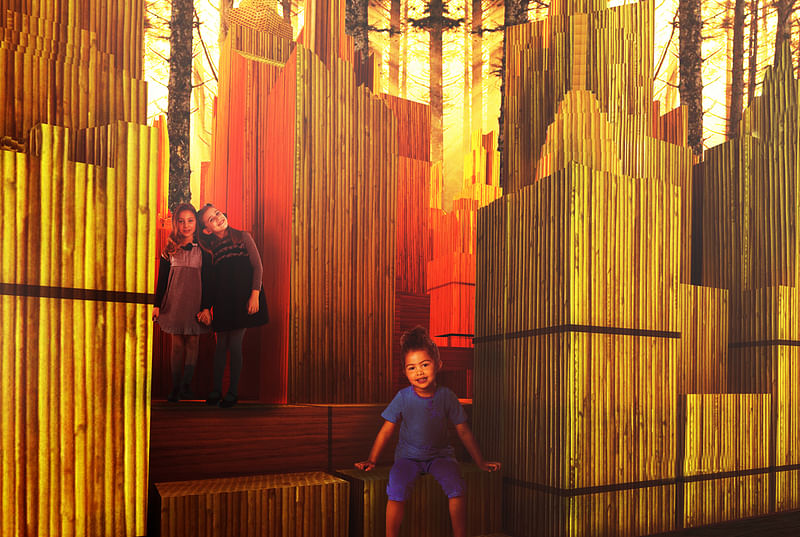Ulf Mejergren Architects' "Stick City": The town 100 kids (could have) built
By Bustler Editors|
Friday, Apr 10, 2015

Related
For most kids, taking part in the fun and creating something together can mean a huge deal. The Beam Camp Competition in New Hampshire invited artists, designers, and creative makers to propose an imaginative, collaborative large-scale project for a kids' summer camp workshop. The project had to be built in a few weeks while also educate and, of course, entertain 100 kid campers.
Swedish practice Ulf Mejergren Architects was a finalist for their proposal "Stick City", which has kids (and camp staff) build reed-stick mini skyscrapers to form a city. UMA incorporated certain rules in the city plan so that the kids get to switch on their problem solving and critical design skills.
UMA's proposal didn't win, but their idea sounds like a fun challenge that could entice architects of any age!
Read more about Stick City below.
Project description:
"Since so many kids were going to be involved in this, we thought it was important to create something that made everyone deeply involved in the process, from the beginning until the end and that everyone should feel as they really created something. The end result should at the same time also be a collective effort with the aim that everyone should strive for the same goal and having fun while doing so."

"Therefore we imagined that with all these motivated kids and staff, an amazing structure could evolve, that was greatly impressive as a whole, but that every part of it was individually created by each kid, in groups of two or three. It’s pretty difficult to make something where every part is equally important for the whole picture, but then we came to think that perhaps this could be sort of a temporary city in miniature, where the parts are unique mini-skyscrapers that are designed by the kids."

"To make this work, we made a city-plan with a certain set of rules so the city will be read as a whole, making us the city planners and the kids the creative architects. The proposed city plan is made up by a grid, like most American cities. The grid has 11 x 11 blocks, with each block being a plywood crate/box measuring 3’ x 3’ and is 2’ high. These boxes is the start for the kids to create their skyscrapers in."

"THE MINI-SKYSCRAPERS - Each pair of kids manufactures a crate with the given dimensions, and are also given a bundle of reed, now it is up to them to create a form inside the box where the reed is going to be placed, so the reed sticks will be shaped by the form underneath, creating a unique mini-skyscraper. Tools for creating figures of papier Maché is provided but it could also be something else that is found in the nature surrounding the camp. The only rules here are that the form cannot be visible when the reed is put in place so the end result will be coherent. Plastic straps are attached to put the reed in place."

"THE CITY - When each skyscraper is produced, it is time to put them together. The city plan indicates that on some blocks there are boxes that are stacked and on other plots skyscrapers are constructed with just half the height as the normal ones. All this is meant to create a more diverse skyline. There are also some blocks that doesn’t have any skyscrapers on them at all, instead they are intended as paths so you can walk around in the city, some of the plots are also intended as seating and stairs. The stairs and the seats are easily constructed by putting something in the box that elevates that portion of the reed to the desired height, just like when doing the skyscrapers. The result will be a fascinating piece of work with a massive amount of details and stories. Since the sticks aren't modified, they can be used again for another purpose when the camp is over."
Images courtesy of Ulf Mejergren Architects.



Share
0 Comments
Comment as :